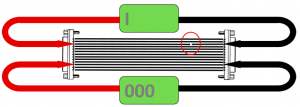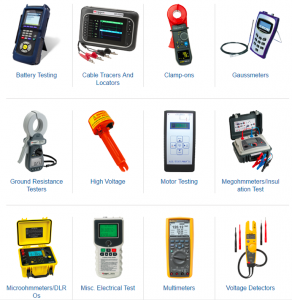If you have conducted inspections at your suppliers’ facilities in China, you have probably found that many of the testing equipment necessary to check your product’s quality is not available on site.
The question, of course, is ‘how can they be sure production is good, if they are unable to check it?’
The reality is simple. A factory that is missing the necessary testing facilities does NOT have the capability of producing consistent quality products.
That’s why an important aspect of auditing any supplier is to determine their testing equipment. This will indicate the level of technical expertise, and it will show that they can conduct the appropriate tests at the different stages of production (including verification tests on raw materials before production starts).
The testing facilities will vary for different product types (e.g. castings vs printed circuit boards). Taking this into consideration, you need to understand the manufacturing process and what testing you require your product to go through.
It may be the case where some test equipment is not used and hidden away, so the auditor needs to ask if certain equipment are available if they are not seen. To reduce that risk, you should list the required equipment in your quality control plan.
Here some example of the different testing facilities that would be appropriate for various manufacturing techniques.
Metal Casting or Die Casting
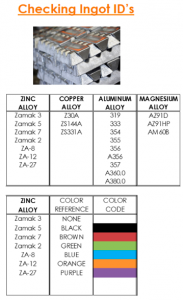 Checking the raw material in its ingot form is probably the first test that needs to be carried out to ensure the delivered material is the correct material for the job.
Checking the raw material in its ingot form is probably the first test that needs to be carried out to ensure the delivered material is the correct material for the job.
There are different types of equipment used to check these chemical elements which will determine if the metal is within specification or not.
ICP-AES analysis (Inductively Coupled Plasma – Atomic Emission Spectroscopy) provides analysis of metals down to trace levels.
OES Analysis (Optical Emission Spectroscopy) provides analysis of metals down to trace levels and is less destructive than an ICP analysis.
SEM-EDS Analysis (Scanning Electron Microscopy – Energy Dispersive Spectroscopy) is particularly useful with a very small sample such as in a failure analysis where you may only have debris or shavings.
Wavelength-Dispersive X-Ray Fluorescence Spectroscopy (WD-XRF) offers compositional analysis of various metals.
X-Ray equipment is also used as a non-destructive test for finished castings to determine if there are any potential failure points within the structure of the cast part.
 Metal Components & Machining
Metal Components & Machining
Hardness testing is one of the most critical mechanical tests that can be carried out on metal components.
There are three general engineering types of hardness testing:
- Brinell, with a carbide ball indenter
- Vickers, a 136° pyramidal diamond indenter
- Rockwell, with an indenter that may be either a diamond cone or steel ball
Electrical Product Testing Facilities
Multiple tests must be carried out due to safety regulations and are mandatory, and other tests are carried out to identify issues and failure points.
Here are just a few of the tests and the equipment used that factories should have within their facilities.
Continuity Testing
A GOOD connection between connectors with NO broken wire is shown in this example (see bottom side — reading is 0 or very close to 0).
A BROKEN wire between connectors is also shown in this example (see top side — reading is 1).
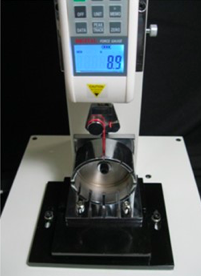 Testing Crimp Connection Strength
Testing Crimp Connection Strength
The mechanical strength and electrical integrity of an electrical terminal, terminator, or connector are related, and depend on the quality of bond created by a crimp joint.
In the case of crimp joints, the crimping tool itself can be calibrated and its effectiveness tested with a cable pull-out/pull-off test.
Hi-Pot Test
The Hipot test is probably the best known, the most often performed and most important production line safety test, and must be performed on every consumer and industrial appliance. The test also uncovers defects in the insulating material or physical space between conductors.
The hipot test is a non-destructive test that determines the adequacy of electrical insulation for the normally occurring over voltage transient. This is a high-voltage test that is applied to all devices for a specific time in order to ensure that the insulation is not marginal.
Believe it or not, but many factories assemble electrical products and don’t have a hi-pot tester!
Checking Earth Bond (PAT Testing)
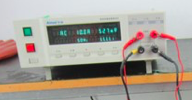 This test is performed by measuring the resistance between the third pin (ground) and outside metal body of the product under test. This test is essential so that the product does not cause an electric shock resulting from insulation failure.
This test is performed by measuring the resistance between the third pin (ground) and outside metal body of the product under test. This test is essential so that the product does not cause an electric shock resulting from insulation failure.
The best method of testing is by using dedicated equipment which is commonly known as Portable Appliance Testing equipment (or PAT tester for short).
Additional test equipment
The list could go on and on. A few more examples would be:
- A fabric cutter and a digital scale
- A digital thermometer probe or thermocouples for checking temperature
- A tachometer to check motor speeds
- A sound meter to check noise levels of electrical products
- A voltage meter
And a few extra examples I found on the internet (click to enlarge):

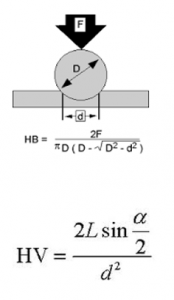 Metal Components & Machining
Metal Components & Machining